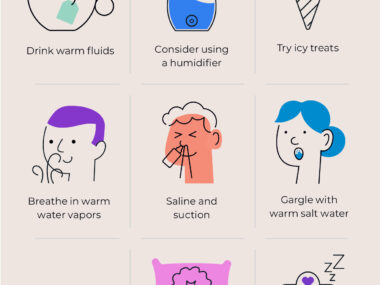Yeast Infection And How to Treat Them
Are you suffering from the discomfort of a yeast infection? Don’t worry; you’re not alone. Yeast infections are a common condition that affects millions of people worldwide. It occurs when there is an overgrowth of the Candida fungus in the body, resulting in symptoms such as itching, burning, and vaginal discharge. However, the good news is that yeast infections are highly treatable, and you don’t have to suffer in silence. In this article, we will explore the various treatment options available to help you get rid of a yeast infection quickly and effectively.
What is a Yeast Infection?
A yeast infection, also known as candidiasis, is caused by an overgrowth of the Candida fungus. Candida is a type of yeast that naturally exists in the body, particularly in the mouth, throat, gut, and genital area. Under normal circumstances, the presence of Candida is balanced by the body’s immune system and other microorganisms. However, certain factors can disrupt this balance, leading to an overgrowth of yeast and the development of an infection.
Common Causes of Yeast Infections
Several factors can contribute to the development of yeast infections. Some of the common causes include:
- Antibiotic Use: Antibiotics can disrupt the natural balance of microorganisms in the body, including the Candida fungus. This disruption can lead to the overgrowth of yeast and the development of an infection.
- Hormonal Changes: Hormonal fluctuations, such as those that occur during pregnancy, menopause, or while taking hormonal contraceptives, can create an environment that favors yeast overgrowth.
- Weakened Immune System: Individuals with weakened immune systems, such as those with HIV/AIDS or undergoing chemotherapy, are more susceptible to yeast infections.
- Uncontrolled Diabetes: High blood sugar levels can promote yeast growth, increasing the risk of developing an infection.
- Poor Hygiene: Improper hygiene practices, including not changing out of wet clothes promptly or using harsh soaps, can disrupt the balance of microorganisms and contribute to yeast overgrowth.
Symptoms of a Yeast Infection
Yeast infections can cause a range of uncomfortable symptoms, which may vary depending on the affected area. Common symptoms of a yeast infection include:
- Vaginal Itching and Irritation: One of the most common symptoms of a yeast infection is intense itching and irritation in the vaginal area.
- Burning Sensation: Yeast infections can cause a burning sensation, especially during urination or sexual intercourse.
- Abnormal Discharge: A thick, white, and odorless discharge is often present in cases of vaginal yeast infections.
- Redness and Swelling: The affected area may become red, swollen, and sometimes develop small fissures or cracks.
- Burning and White Patches in the Mouth: In cases of oral yeast infections, the mouth may be sore, with white patches on the tongue and inner cheeks.
Diagnosing a Yeast Infection
If you suspect you have a yeast infection, it is essential to get an accurate diagnosis before starting treatment. While some individuals may be able to self-diagnose based on their symptoms, it’s always best to consult a healthcare professional for confirmation. A healthcare provider will typically perform a physical examination and may take a sample of the affected area for laboratory testing. This allows them to determine the presence of Candida and rule out other possible causes of the symptoms.
Home remedies for yeast infections – natural solutions
Garlic as a natural remedy for yeast infections
Garlic is well-known for its antimicrobial and antifungal properties, making it an effective natural remedy for yeast infections. It contains a compound called allicin, which has been shown to inhibit the growth of Candida. To use garlic as a remedy, you can:
- Crush a few garlic cloves and make a paste.
- Apply the paste directly to the affected area.
- Leave it on for about 30 minutes, then rinse with warm water.
Alternatively, you can include more garlic in your diet to benefit from its antifungal properties. Add crushed garlic to your meals or take garlic supplements after consulting with a healthcare professional.
Yogurt as a natural remedy for yeast infections
Yogurt contains beneficial bacteria known as Lactobacillus acidophilus, which helps maintain a healthy balance of bacteria in the body. Applying yogurt topically or consuming it can help restore the natural balance and alleviate yeast infection symptoms. Here’s how you can use yogurt as a remedy:
- Dip a clean tampon into plain, unsweetened yogurt.
- Insert the tampon into the vagina and leave it in for a couple of hours.
- Rinse the area with warm water after removing the tampon.
In addition to topical application, including yogurt in your diet can also help prevent yeast infections. Opt for plain, unsweetened yogurt with live cultures for maximum benefits.
Tea tree oil as a natural remedy for yeast infections
Tea tree oil is a powerful essential oil with antifungal and antibacterial properties. It can effectively combat yeast infections and reduce symptoms like itching and inflammation. However, it is essential to use tea tree oil properly to avoid any adverse reactions. Here’s how to use tea tree oil for yeast infections:
- Mix a few drops of tea tree oil with a carrier oil, such as coconut oil or olive oil.
- Apply the mixture to the affected area using a clean cotton ball.
- Leave it on for a few hours, then rinse with warm water.
Note: Tea tree oil is potent, and some individuals may be sensitive to it. It is recommended to do a patch test on a small area of the skin before applying it to the affected area.
Apple cider vinegar as a natural remedy for yeast infections
Apple cider vinegar has been used for centuries as a natural remedy for various ailments, including yeast infections. It helps restore the pH balance of the vagina, creating an environment less favorable for yeast overgrowth. To use apple cider vinegar for yeast infections:
- Mix two tablespoons of apple cider vinegar with warm water.
- Use the mixture to rinse the affected area.
- Repeat this process a few times a day until the symptoms improve.
It is important to dilute apple cider vinegar before using it topically, as undiluted vinegar can cause skin irritation.
Precautions and tips for using home remedies for yeast infections
While home remedies can be effective in treating yeast infections, it is essential to take certain precautions and follow these tips:
- Consult a healthcare professional if you are unsure about your symptoms or if your symptoms worsen despite using home remedies.
- Practice good hygiene by keeping the vaginal area clean and dry.
- Avoid douching, as it can disrupt the natural balance of bacteria in the vagina.
- Opt for breathable cotton underwear and avoid tight-fitting clothing.
- Limit your sugar intake, as yeast thrives on sugar.
- Practice safe sex and consider using condoms to prevent the spread of infection.
By following these precautions and incorporating home remedies into your routine, you can effectively manage yeast infections and reduce the likelihood of recurrence.
Conclusion: When to seek medical advice for yeast infections
While home remedies can provide relief for mild to moderate yeast infections, it is important to seek medical advice in certain situations. Consult a healthcare professional if:
- You are experiencing recurrent yeast infections.
- Your symptoms worsen or do not improve with home remedies.
- You are pregnant or breastfeeding, as certain treatments may not be suitable.
- You have a weakened immune system or underlying medical conditions.
Remember, everyone’s body is unique, and what works for one person may not work for another. If you’re unsure about using home remedies or if your symptoms persist, it’s always best to seek professional guidance.
Say goodbye to the discomfort and embarrassment of a yeast infection with these powerful and accessible home remedies. Embrace the natural approach and take control of your health today.










